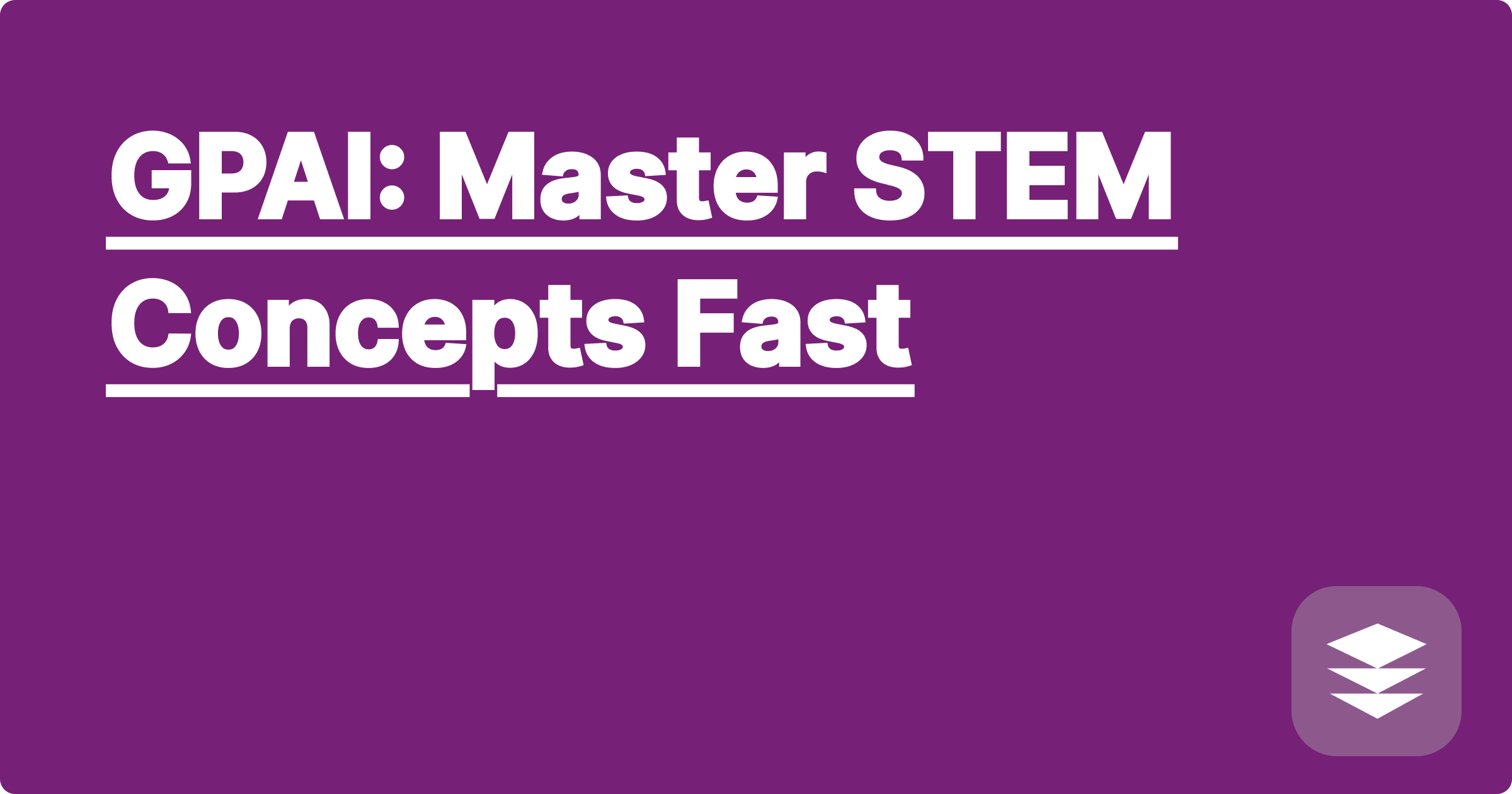
The world of STEM is a thrilling but demanding landscape. From complex mathematical equations to intricate biological processes, the sheer volume of information can feel overwhelming. Many students find themselves struggling to keep up, spending countless hours studying with seemingly little progress. This is where the power of Artificial Intelligence comes into play. AI offers a revolutionary approach to learning, providing personalized support and unlocking new levels of efficiency in STEM education. Imagine having a personalized tutor available 24/7, ready to explain difficult concepts, generate practice problems tailored to your weaknesses, and even help you manage your study time. This is the promise of AI-powered learning platforms like GPAI, and this blog post will explore how these tools can help you master STEM concepts faster and achieve academic success.
This new era of AI-powered learning is particularly relevant for STEM students and researchers who are often faced with dense, complex material. The traditional methods of learning, like passively reading textbooks and attending lectures, can be inefficient and leave students feeling lost. AI tools offer a more interactive and personalized learning experience, adapting to individual learning styles and pacing. By leveraging these tools, students can not only grasp complex concepts more quickly but also develop a deeper understanding of the subject matter, which is crucial for success in STEM fields.
STEM subjects often build upon each other, creating a cascading effect where a weak understanding of foundational concepts hinders progress in more advanced topics. For example, a shaky grasp of algebra can make calculus a nightmare, and a lack of clarity in basic chemistry can make organic chemistry feel insurmountable. This interconnectedness of STEM subjects means that falling behind in one area can create a domino effect, impacting performance across multiple courses. Furthermore, the traditional one-size-fits-all approach to education often fails to cater to the diverse learning styles and paces of individual students. Some students may grasp concepts quickly, while others require more time and repetition. This disparity can lead to frustration and discouragement, especially for those who find themselves struggling to keep up with the pace of the curriculum.
AI-powered learning platforms, like the fictional GPAI, address these challenges by providing personalized learning experiences. GPAI (and similar platforms) can analyze a student's strengths and weaknesses, identify knowledge gaps, and create a customized learning plan. Imagine struggling with a particular concept in thermodynamics. Instead of spending hours poring over textbooks, you can use GPAI to break down the concept into smaller, more manageable chunks. The platform can provide targeted explanations, interactive simulations, and practice problems specifically designed to address your areas of weakness. Moreover, GPAI can adapt to your learning pace, providing more challenging material as you progress and offering additional support when needed.
Getting started with an AI learning platform like GPAI is typically straightforward. First, you would create an account and provide some information about your academic background and learning goals. Then, you might take a diagnostic assessment to help the platform gauge your current knowledge level. Based on this assessment, GPAI will generate a personalized learning plan. This plan might include a combination of interactive lessons, practice problems, and quizzes. As you work through the material, GPAI continuously tracks your progress and adjusts the learning plan accordingly. You can also use GPAI to review specific concepts, get help with homework assignments, and prepare for exams. For example, if you're struggling with a particular type of integral in calculus, you can ask GPAI to generate similar problems and provide step-by-step solutions.
Consider a student struggling with chemical equilibrium. Using an AI tool like Wolfram Alpha, they can input the chemical equation and receive instant calculations of equilibrium constants, reaction rates, and other relevant parameters. This allows them to experiment with different variables and visualize the effects on the equilibrium, fostering a deeper understanding of the concept. In physics, a student grappling with projectile motion can use an AI-powered simulator to visualize the trajectory of a projectile under different initial conditions. They can adjust the launch angle, initial velocity, and air resistance to see how these factors influence the projectile's path, solidifying their understanding of the underlying physics. Even in biology, AI can be incredibly helpful. Imagine trying to understand complex metabolic pathways. An AI tool can visualize these pathways, highlighting key enzymes and intermediates, making it easier to grasp the intricate network of reactions.
Integrating AI tools into your study routine requires a strategic approach. Don't rely solely on AI; treat it as a supplement to your existing learning methods. Use AI to reinforce concepts learned in class, practice problem-solving, and identify areas where you need further study. Schedule dedicated time for AI-powered learning sessions, just as you would for traditional study. Experiment with different AI tools to find the ones that best suit your learning style and needs. Some platforms might excel at providing concise explanations, while others might be better for generating practice problems. Don't be afraid to ask for help. If you're struggling with a particular concept, use AI tools to break it down into smaller, more manageable pieces. Finally, remember that AI is a tool, not a replacement for hard work and dedication. Use it wisely and combine it with effective study habits to maximize your academic potential.
To truly unlock the potential of AI in your STEM journey, begin by exploring the various AI learning platforms and tools available. Research different options, read reviews, and perhaps even try out free trials to find the best fit for your learning style and needs. Start incorporating AI into your existing study routine gradually, focusing on specific areas where you feel you need extra support. Don’t be afraid to experiment and adjust your approach as you go. The world of AI-powered learning is constantly evolving, offering new and exciting possibilities for STEM students. Embrace these tools and embark on a path to accelerated learning and academic excellence.